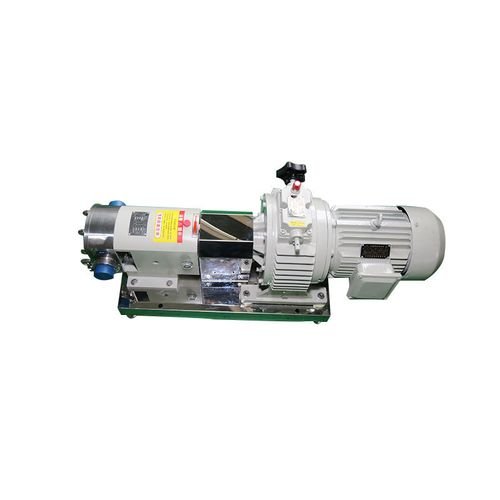
China Pumping Solutions Leader
saiken Pumps will give you a detailed description of the rotary lobe pump:
Unlike gear pumps, the lobes used in these pumps do not physically touch each other, a feature that provides some distinct advantages when pumping certain types of materials. During operation, the shaft connected to the impeller rotates in the opposite direction, creating repeated low pressure in the pump body, and the suction product moves from the pump inlet port around the outside of the pump impeller to the outlet port. Because the movement of the pump blades causes the pump to expel a specific amount of fluid per rotation, the output of the pump can be easily controlled by mechanically changing the speed of the pump motor, usually using a variable frequency driver (VFD).
Advantages of rotary lobe pump
Because the lobes of the pump do not touch each other, the lobe pump can move solids suspended in the slurry (such as cherries or olives in food processing applications) without damaging the product.
Gentle pump action further reduces product damage.
Can handle larger sizes of particles pumped than other types of positive displacement pumps.
It can be cleaned easily using in situ cleaning (CIP) or in situ steam (SIP) methods, making it ideal for sanitary processing applications.
Very efficient pumping of very viscous liquids.
Sufficient fluid viscosity is assumed to provide accurate and consistent fluid output independent of changes in head pressure.
The fluid flow can be increased or decreased by controlling the drive speed.
If wetted, the rotor pump is also self-priming and can run dry for long periods of time (assuming the pump seals are lubricated).
Generally easy to maintain.
Make full use of the performance of the rotor pump
The rotor pump delivers a defined volume of fluid for each cycle of operation (that is, each turn of the CAM). In addition to slip, the factor that determines the amount of fluid pumped is the speed at which the blades turn (that is, the speed at which the pump runs, not the RPM of the motor). Most CAM pumps use a gearbox to increase or decrease the speed of operation.
The slip of the rotor pump is determined by two factors, the viscosity of the pumping fluid and the pressure difference of the pump. As the viscosity of the fluid increases, the amount of slip decreases because the more viscous fluid cannot slide back into the gap in the pump lobe as easily as the diluted fluid.
Then, as the discharge pressure of the pump increases, the slip increases as the pump works harder to move fluid from the suction side of the pump to the discharge side of the pump to discharge it. And that’s kind of intuitive, because the pressure is going up, so you’re going to slip.
